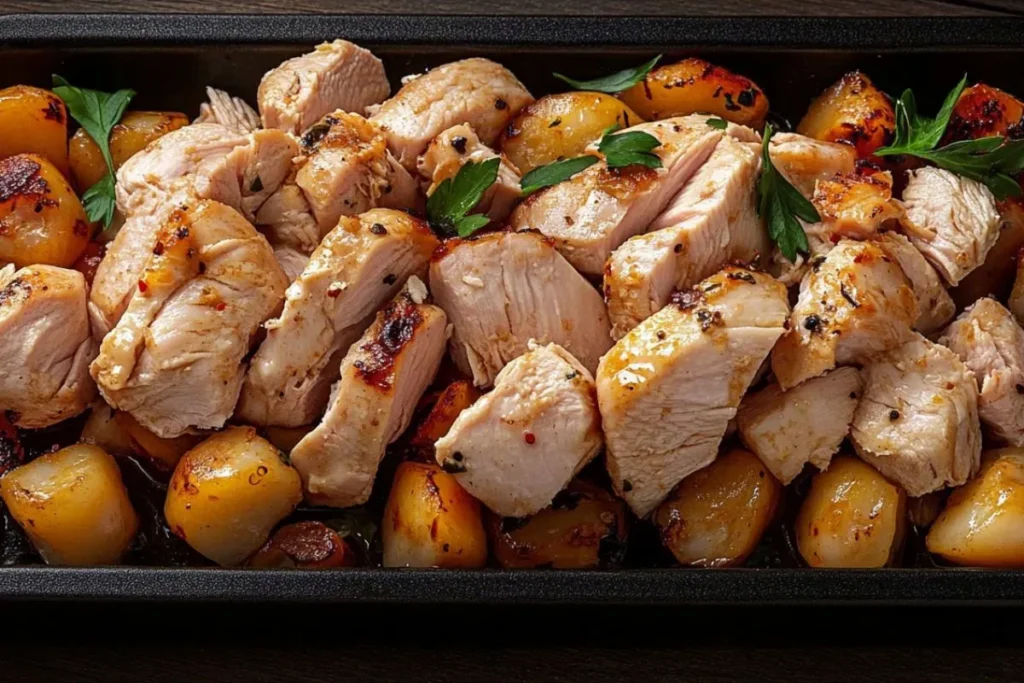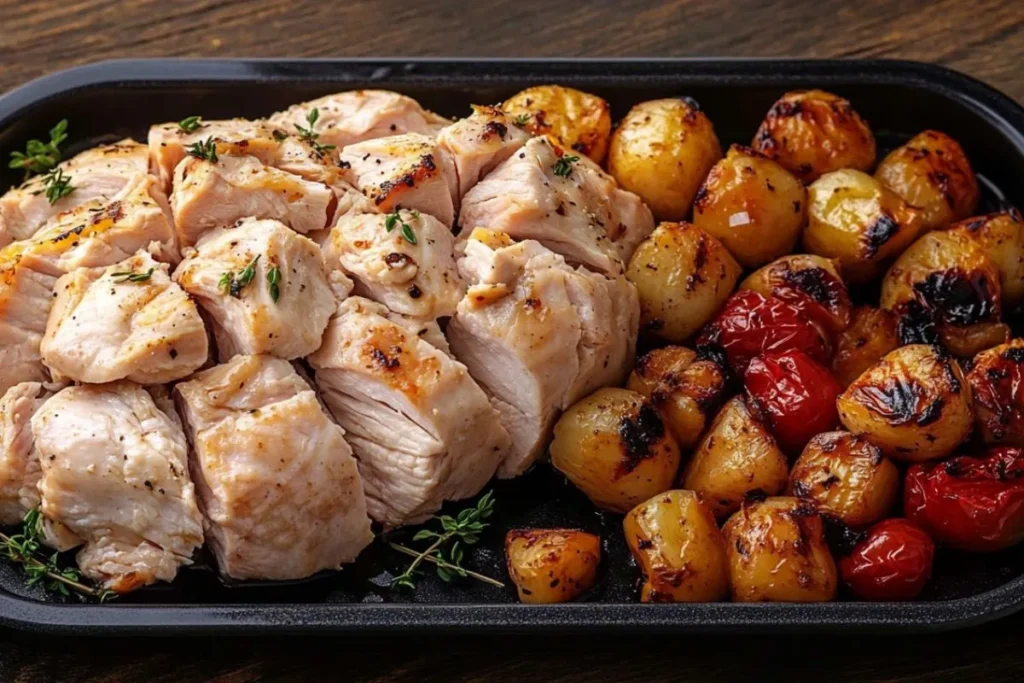Chicken is a versatile and widely-loved protein found in kitchens around the world. Whether you’re preparing a quick weeknight dinner or meal prepping for the week ahead, chicken is a go-to option for many. Understanding how much 1 pound of chicken will serve, its nutritional benefits, and the best ways to cook it can make a significant difference in your meal planning. This article will explore these aspects and help you make the most of 1 pound of chicken.

What Does 1 Pound of Chicken Mean?
Before you start cooking, it’s important to grasp exactly what 1 pound of chicken means in practical terms. A pound is simply a unit of weight, but how that translates to usable meat can vary significantly depending on the cut of chicken.
Here’s a breakdown:
- Boneless, skinless chicken breast: One pound typically equals about 2 medium-sized chicken breasts.
- Chicken thighs: One pound of bone-in, skin-on chicken thighs usually equals 4-5 pieces.
- Chicken wings: A pound of wings generally consists of 4-6 whole wings, depending on the size.
Understanding the weight-to-portion ratio will help you plan more effectively, ensuring you cook enough for your needs without wasting food. This is especially useful for meal prepping or cooking for a family.
Nutritional Benefits of 1 Pound of Chicken
Chicken is not only delicious but also a nutrient-dense option that offers several key benefits. Whether you’re looking to maintain a healthy lifestyle or meet specific dietary needs, chicken can be a great choice. Let’s explore the nutritional value of 1 pound of chicken in more detail.
1. Protein Powerhouse
One of the standout benefits of chicken is its protein content. Protein is essential for the growth, repair, and maintenance of body tissues. It also plays a critical role in immune function and energy metabolism. A 1-pound serving of boneless, skinless chicken breast offers around 100 grams of protein. Meanwhile, chicken thighs provide around 85 grams of protein per pound.
Protein is particularly important for athletes, bodybuilders, and anyone looking to increase muscle mass or recovery. Even for people with a more sedentary lifestyle, a protein-rich diet can help maintain lean body mass and manage weight.
2. Low in Fat (When Skinless)
For those concerned about fat intake, chicken breast is an ideal choice. It’s especially low in fat compared to other protein sources. One pound of skinless, boneless chicken breast contains around 4 grams of fat, making it a lean source of protein. On the other hand, chicken thighs, which contain more fat due to their darker meat, have about 13 grams of fat per pound.
However, fat isn’t inherently bad. In fact, healthy fats are important for overall health. Chicken thighs may offer a higher fat content, but they also provide essential fatty acids that the body needs for optimal function. Thus, the decision between chicken breast and thighs depends on your specific dietary goals.
3. Packed with Essential Vitamins and Minerals
Chicken is a rich source of several essential vitamins and minerals that support various functions in the body. Here are some key nutrients found in chicken:
- B vitamins: Chicken is a fantastic source of several B vitamins, particularly niacin (vitamin B3), vitamin B6, and vitamin B12. These vitamins help with energy production, brain function, and the formation of red blood cells.
- Selenium: A mineral that plays an important role in antioxidant protection and thyroid health. Chicken is a good source of selenium.
- Phosphorus: This mineral is essential for maintaining healthy bones and teeth, and chicken provides a solid amount.
Eating chicken regularly can help you meet your daily nutrient needs without the need for excessive supplementation. Most importantly, these nutrients are provided in a way that is easy to digest and absorb.
How Much is 1 Pound of Chicken Good For?
How much you can expect to serve from 1 pound of chicken depends on the cut and how you plan to prepare it. Here’s a breakdown of serving sizes for common chicken cuts:
Boneless, Skinless Chicken Breast
One pound of boneless, skinless chicken breast typically serves 2-3 people, depending on the size of the portions. If you’re making a dish like chicken salad or chicken stir-fry, you may be able to stretch this to feed more people by adding vegetables or grains like rice or quinoa.
Bone-in Chicken Thighs
Bone-in, skin-on chicken thighs usually yield slightly less meat than their boneless counterparts. As a result, one pound generally serves 2 people, but this can vary depending on how many pieces are included. For example, a pound might consist of 4 medium-sized thighs, which could be enough for two people depending on their appetites.
Chicken Wings
When it comes to chicken wings, 1 pound typically contains 4-6 whole wings, which can be served as an appetizer or a main course. If you’re serving wings as part of a larger spread with other side dishes, a pound may easily feed 4-6 people.
On the other hand, if wings are the main event of the meal, you may want to purchase 1.5-2 pounds of wings per person to ensure everyone has enough.
Ways to Cook 1 Pound of Chicken
Chicken can be cooked in numerous ways, each offering unique flavors and textures. Let’s explore several popular methods for cooking 1 pound of chicken.
1. Grilled Chicken
Grilling is one of the healthiest ways to prepare chicken. It imparts a smoky flavor while keeping the chicken lean. Simply season your chicken with olive oil, salt, pepper, and any other spices you prefer. Grill the chicken over medium-high heat until it reaches an internal temperature of 165°F (74°C).
For added flavor, consider marinating your chicken for 30 minutes before grilling. Marinades can help tenderize the meat and infuse it with more flavor. You can also try grilling chicken on skewers, adding vegetables or fruits for extra flavor.
2. Baked Chicken
Baking chicken is another easy, hands-off method. Preheat your oven to 375°F (190°C), season your chicken, and bake it for 20-30 minutes, depending on the cut. This method retains moisture and results in juicy, flavorful chicken.
If you’re cooking bone-in pieces, such as thighs or drumsticks, you may need to bake for a bit longer. For extra crispiness, broil the chicken for the last 2-3 minutes of cooking.
3. Sautéed Chicken
Sautéing chicken is a quick and efficient method that gives you a crispy exterior while maintaining tenderness on the inside. Heat some olive oil or butter in a pan over medium heat, season the chicken, and cook it for about 5-7 minutes on each side. This method works best with boneless cuts like chicken breast or thighs.
Sautéed chicken can be served on its own or with a side of vegetables and grains. You can also use this method to prepare chicken for dishes like chicken fajitas or stir-fries.
4. Slow-Cooked Chicken
Slow cooking chicken is perfect for busy days or for creating tender, flavorful meals. Using a slow cooker or Crockpot, you can cook chicken on low for 6-8 hours. This method is ideal for tougher cuts like chicken thighs or whole chicken, and the long cooking time ensures the meat becomes tender and juicy.
Slow-cooked chicken can be used for a variety of dishes, such as chicken tacos, soups, stews, or shredded chicken sandwiches.
5. Stir-Fried Chicken
Stir-frying is a popular method for preparing chicken when you want to make a quick meal. Cut your chicken into small pieces and stir-fry it with vegetables, sauce, and rice or noodles in a hot wok or skillet. Stir-frying cooks the chicken quickly, resulting in a crisp and flavorful meal.
Stir-fries can be customized to your liking with different vegetables, sauces, and seasonings. You can also add protein-rich tofu or shrimp to the mix for a more diverse dish.
How to Make the Most of 1 Pound of Chicken
1 pound of chicken can go a long way if you know how to stretch it. By adding vegetables, grains, or using leftovers creatively, you can maximize your chicken purchase while saving time and money.
1. Pairing Chicken with Vegetables and Grains
One of the best ways to make 1 pound of chicken stretch is by pairing it with vegetables and grains. This ensures a balanced and nutritious meal without needing a large portion of meat. Here are some ideas:
- Rice or quinoa: Both are excellent sources of carbohydrates and fiber. They also absorb the flavors of the chicken and any sauces you use.
- Roasted vegetables: Vegetables like carrots, broccoli, and zucchini complement chicken beautifully. You can roast them in the oven alongside your chicken for a low-effort, flavorful meal.
- Salads: Grilled or baked chicken pairs well with leafy greens like spinach or romaine. Adding chickpeas or beans will boost the protein content of the salad.
2. Repurposing Leftovers
Chicken leftovers can be used to create new meals, saving both time and money. Consider turning leftover chicken into:
- Chicken sandwiches or wraps: Shred the leftover chicken and use it to make sandwiches or wraps with fresh veggies and sauces.
- Chicken soup or stew: Use the leftovers to make a hearty soup or stew by adding broth, vegetables, and seasonings.
- Chicken salad: Shredded chicken can be turned into a healthy chicken salad with a simple dressing and crunchy vegetables.
Repurposing leftovers is not only efficient but also helps reduce food waste, making it an environmentally friendly option.

Common Questions About 1 Pound of Chicken
As you plan your chicken-based meals, here are some frequently asked questions about 1 pound of chicken.
1. How Many Calories Are in 1 Pound of Chicken?
The calorie content of 1 pound of chicken varies depending on the cut. Here’s a general breakdown:
- Boneless, skinless chicken breast: About 500-550 calories per pound.
- Chicken thighs (skinless): Roughly 600-650 calories per pound.
- Chicken wings: Approximately 800-900 calories per pound.
Remember that these numbers can fluctuate based on cooking methods, added fats, or marinades.
2. Can I Freeze 1 Pound of Chicken?
Yes, chicken can be frozen for later use. Simply wrap the chicken tightly in plastic wrap, aluminum foil, or place it in a freezer-safe bag. Frozen chicken can last up to 9 months in the freezer.
When you’re ready to cook, thaw the chicken in the refrigerator overnight or use the defrost function on your microwave. It’s important to cook chicken promptly after thawing to ensure it’s safe to eat.
3. How Do I Know When My Chicken is Fully Cooked?
The best way to check if your chicken is fully cooked is to use a meat thermometer. The internal temperature should reach 165°F (74°C). Additionally, the juices should run clear and not be pink.
Conclusion
1 pound of chicken is a versatile ingredient that can be used in various ways to create nutritious, delicious meals. By understanding the portion sizes, nutritional benefits, and best cooking methods, you can maximize the potential of this lean protein. Most importantly, by pairing chicken with vegetables and grains or repurposing leftovers, you can stretch your meal planning and make your chicken go further.
Call to Action: Next time you pick up 1 pound of chicken, try experimenting with different cooking methods or use leftovers creatively for a meal that will satisfy both your taste buds and your budget.

